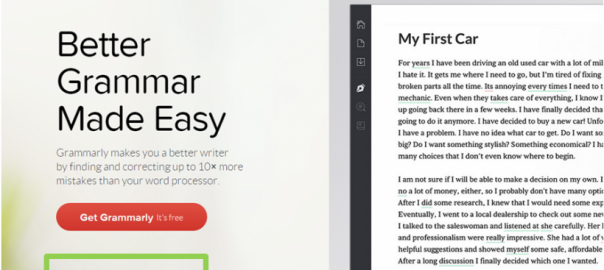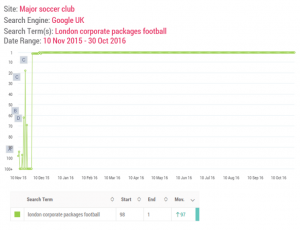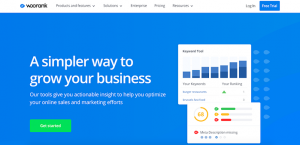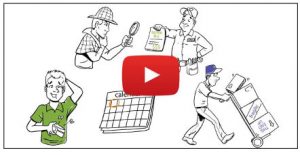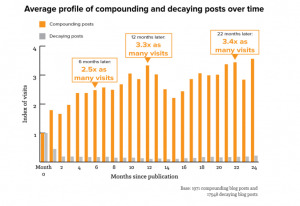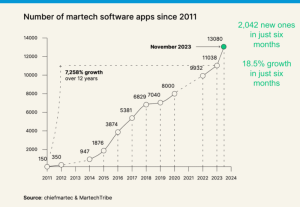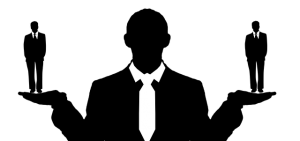
A landing page is any web page you land on online. At least, technically speaking. But in digital marketing, it means something very different.
For marketers, landing pages are designed to collect data from users through a call-to-action, usually giving them valuable content in return. They not only capture customer data, but give marketers better insight as to what interests the user, and where they are in the sales process.
Landing pages improve conversion rates. They help guide customers from a pay per click ad to the product or service they wish to purchase. This makes landing pages an integral part of a pay per click campaign. Here’s what you need to know about landing pages and how to make them work for you.
What’s a Landing Page?
Some marketers use landing pages to direct users to another page on their website. Those other pages often contain an offer or a shopping cart. The landing page drives the customer exactly where they need to be, minimizing the chance of losing them. This method is often used to direct PPC traffic from a search engine to a web page, especially with eCommerce purchases.
Others, such as HubSpot, say landing pages exist purely to obtain user information through a form. That form collects a user’s name, email address, and any other data necessary to move them further into the buyer’s journey. This is a lead generation landing page, and the data it collects will help you turn a prospect into a customer. This method is often used when downloading an offer like an ebook, or with services like insurance providers when giving a quote.
What Are the Types of Landing Pages?
Marketers love data. Seriously, we’re very interested in how people interact with our content and why they interact with it. We love our data so much, we use gated content so users will give us more data.
For example, here’s a piece of gated content we’re currently using here at eZanga. We ask three simple questions: who are you, what’s your role in your office, and how can I reach you. By providing this information, the user gets our 12 Steps to Perfect PPC Optimization checklist. In turn, we get to know a bit more about someone who uses a checklist like this.

This is a marketing landing page. While some PPC ads do drive traffic to these kinds of forms to pre-qualify leads (think insurance or services), others are trying to drive sales. The landing page for both of these types of PPC are quite different.
For instance, a user searching for a MacBook Pro 2015 might see an ad from Sears and click-through to their landing page. A user isn’t met with a form, but rather the option to take this MacBook Pro and “Add to Cart.” Their purpose is to simply sell more computers, whereas the marketing landing page is meant to gain more information. Both are valuable, but each has a different application.
 What Makes the Perfect PPC Landing Page?
What Makes the Perfect PPC Landing Page?
Now that you know what a landing page is, let’s discuss some of the elements that make up a landing page. These are items that can be A/B tested, and made stronger, to better convert leads into customers. They include:
A Strong Headline
A headline should be clear and concise, asking the user to do one specific thing. Not only should it very clearly show what special value exists, but it should match the value proposition in your ad copy. Without clear copy, and a strong message match, your customer will be confused by the page they landed on, and more likely to leave your site altogether.
Clear Concise Copy
Your copy should be impactful, short, and to the point. Most people skim landing pages, so it’s important that the words they do catch, count. Include the benefits and why the user should be interested in your product or service, but don’t overwhelm them. Make it simple, and easy for them to see and understand where to purchase your product or complete the form. And don’t forget your PPC copy should match your landing page, otherwise you run the risk of confusing your user.

A Bold Call-to-Action
It may sound fairly basic, but you need to tell your readers exactly what action you want them to take. A call-to-action is a phrase or image that urges someone to take immediate action. With a PPC landing page, it may be “Order Now” in response to a 20% off discount, or “Get Your Quote Now” on a form fill-out for an automotive insurance quote.
Matching Images
Naturally, users expect that the image they see in a PPC ad is the image they’ll receive on the landing page. A well-optimized landing page is a converting landing page, so take some extra time to ensure your landing page images match that of your pay per click ads, too.

A Solid Lead Generation Form
When it comes to the placement of your forms, it’s all about location, location, location. Don’t hide your form in a cluttered mess. Instead, it should be in an open space that is easily seen by the user.
Geico does an excellent job highlighting their CTA: “Start Your Quote.” It’s set apart in the blue banner with a bold orange button, highlighting the form. In this instance, less is more, with Geico only requiring the user’s zip code to get started.
Now if only their headline highlighted their “inconceivable” $ 19 quote.

Social Proof
Social proof lends validity to a user, that they will be just as impressed with your product as other people were. With PPC, it can give you the extra edge you need to earn the click, and to further woo them on your landing page.
Take for instance the grammar checker, Grammarly. It’s a grammar software tool that can help users be more confident in their writing ability. They use social proof very well in their PPC ad, calling out their social extensions on Twitter, the number of users using their product, their 4.5 star rating, and proudly boast a link right to their customer product reviews.

Each of these extensions draws your attention to the fact that users like their product. As a result, they’re one of the world’s best proofreading tools. Once a user clicks the ad, Grammarly drives home their message with a trusted brand name right on their landing page.

A solid landing page like this one will not only increase your PPC leads (which is what pay per click advertising is all about), it will also improve your Quality Score. And as we know, a good QS is key to improving your trustworthiness and campaign success!
Take a look at your PPC landing pages: are they optimized for success? If not, take advantage of these tips and tricks and you’ll be sure to pull ahead of the competition in no time.
Digital & Social Articles on Business 2 Community
(149)
